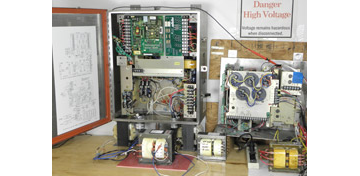
STC on Track for ISO Revision
STC has been certified to the ISO 9001 quality program continually since 1999, and STC achieved re-certification in November of this year.
The ISO 9001 standards are revised every five years or so, requiring periodic recertification to the latest ISO revision. The standard was revised again this year, updating the previous 2008 standard.
The latest revision is ISO 9001:2015, which requires greater emphasis toward anticipating the risks present in the organization’s environment.
This risk-based thinking is not new to the ISO 9001 quality management system, which has always focused on anticipating and preventing mistakes. However, the revised standard has made the approach explicit by specifically addressing Organizational Context, Leadership, Planning, Support, and Performance Evaluation.
“It’s left very much up to the organization, taking into consideration, of course, their customer requirements and the regulatory framework in which they may operate, to define their own needs for documentation in order to manage the processes.”
While discussing the 2015 revision, Nigel Croft, Chair of the ISO subcommittee that developed and revised the standard, emphasized the flexible nature of the new standard.
According to Croft, “It’s left very much up to the organization, taking into consideration, of course, their customer requirements and the regulatory framework in which they may operate, to define their own needs for documentation in order to manage the processes.”
“It provides the confidence, that’s the key word, confidence, that customers around the world—right through the supply chain, business-to-business, business-to-consumer, right down to us as individuals—can have confidence in the products and services that they’re receiving from their certified suppliers.”
Because STC was recently re-certified to the 2008 revision, the Quality team is in the process of implementing a plan for meeting new requirements as early as next year.
Angie Calkin, Vice President of Operations at STC, is pleased with the company’s ability to meet the revised standard.
“Because we’ve considered and planned for the various risks that exist for us, the 2015 revision is not very different from the way we’ve done things,” Calkin said. “The biggest change for us will be in the documentation of some of these things.”

Electronic Enthusiasm at STC
Many of the inquiries we received here at STC are from engineers or buyers from businesses with new products in development. These callers are often looking for design assistance and/or contract manufacturers able to provide electronic assemblies for their new products.
During these conversations, we often ask a lot of questions about their new product. Sometimes the business reps are forthcoming about the new products, often times not so much. We try to be understanding for both cases. We also try to make it clear why we are so inquisitive.
It all comes down to this: We are not only genuinely enthusiastic about what we do, but we also have the knowledge and experience to offer the best design and performance solutions.
Because a large percentage of our work is on custom designs with detailed electrical requirements, it’s not uncommon for us to perform full testing of our sub-assemblies in complete product assemblies.
This testing, which is performed at our in-house testing lab, often includes evaluation of our sub-assemblies in several varying voltage and frequency-input combinations, ambient temperatures and different equipment operating modes. This testing ensures our sub-assemblies function optimally within the customer’s system. Important parameters that are evaluated include heat rise, efficiency, and current draw for a sub-assembly over a wide range of input conditions.
While time is of the essence, and 100-percent performance is the standard, our eagerness for getting your design and production right has remained from the start. Let us know how we can help you.
STC Product Highlights
If you’ve spent any time looking through our website, you’ve undoubtedly noticed the various types of electronic components and transformers that are designed and manufactured by STC. In this article, we’ll look at three specific product types, as well as information about the equipment in which these components are found.
Electronic Controls
In the field of printed circuit assemblies, electronic controls is another of the many specialty areas for STC.
Many of these types of PCB assemblies are used in coded secure-entry systems, which are capable of tracking who enters and leaves equipped premises. STC has valuable experience providing both solenoid and motor controls for these types of systems. As with all of our electronic assemblies, we provide everything from the design and build of power-supply components, PC boards, and cable harnesses.
Control Transformers
As the name implies, control transformers are used to apply power for the control circuitry for a wide range of equipment, everything from medical equipment (including medical imaging, patient lift systems, and others), to industrial shop equipment (including compressors, hoist, and others) to vacuum-sealing devices and many others.
STC has experience working with customers to design and build transformer models that are made to work with their specific systems. There is no need to select an off-the-shelf unit that requires adapting your system to the transformer.
Low-Profile Transformers
The low-profile transformers from STC go by the series name “LPC” and are ideal for assemblies requiring a printed circuit board (PCB) where vertical space is at a premium.
STC is an ideal partner in providing complete electronics assemblies, including low-profile transformers, PCB assembly, and wiring harnesses.
Much of our experience has also involved requirements such as two-party design, source traceability, ISO quality procedures, product testing, and close work with our customers to verify that their own quality requirements are met.
Please contact us to see how STC can help with your next project.

